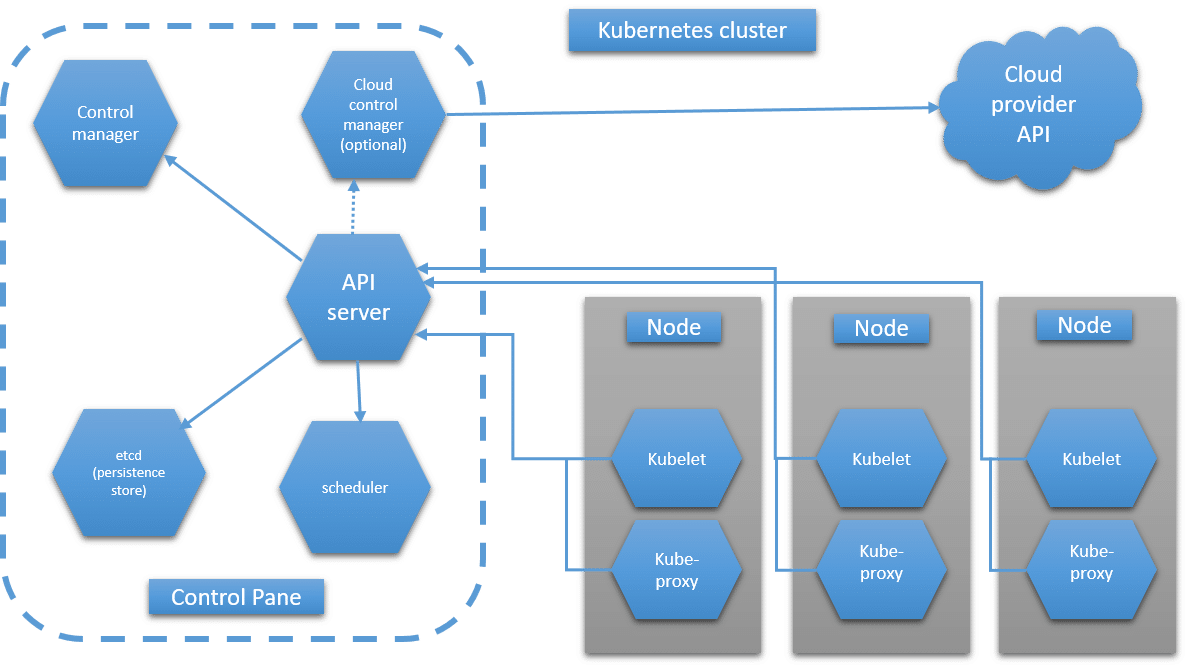Kubernetes, the popular container orchestration platform, consists of several key components that work together to manage and maintain containerized applications. One of the critical components is the Kubernetes Control Plane, which acts as the brain behind the entire Kubernetes cluster.
In this article, we will explore the Kubernetes Control Plane, its components, and its role in managing and controlling the cluster.
The Kubernetes Control Plane is responsible for maintaining the desired state of the cluster and managing the lifecycle of Kubernetes objects. It ensures that the cluster is running smoothly, monitors the health of nodes and pods, and orchestrates the scheduling and deployment of applications.

Components of the Kubernetes Control Plane
- kube-apiserver: The kube-apiserver serves as the front-end API for the Kubernetes Control Plane. It exposes the Kubernetes API, which allows users and other components to interact with the cluster. All requests and operations, such as creating, updating, or deleting objects, are handled by the kube-apiserver. It serves as the central point of communication for all cluster operations.
- etcd: etcd is a distributed key-value store that serves as the cluster’s persistent data store. It stores the entire state of the Kubernetes cluster, including configurations, deployments, and runtime information about nodes and pods. The kube-apiserver interacts with etcd to read and write the cluster state, ensuring consistency and high availability.
- kube-scheduler: The kube-scheduler is responsible for making decisions about where to place newly created pods within the cluster. It considers factors such as resource availability, placement constraints, and affinity rules to determine the most suitable node for each pod. The kube-scheduler continuously monitors the cluster and assigns pods to nodes based on the defined scheduling policies.
- kube-controller-manager: The kube-controller-manager consists of several controllers that manage different aspects of the cluster. These controllers ensure that the current state of the cluster matches the desired state defined by the users or applications. For example, the node controller monitors the health of nodes, the replication controller manages the desired number of pod replicas, and the service controller handles the lifecycle of services.
- cloud-controller-manager: The cloud-controller-manager is responsible for interacting with the underlying cloud infrastructure provider, such as AWS or GCP, to manage cloud-specific functionalities. It abstracts the cloud provider-specific operations from the core Kubernetes components. For example, it provisions load balancers, manages storage volumes, and handles node auto-scaling based on the cloud provider’s capabilities.
Role of the Kubernetes Control Plane
The Kubernetes Control Plane plays a crucial role in managing and controlling the cluster’s behavior. It ensures that the desired state of the cluster matches the actual state, continuously monitors the health and availability of nodes and pods, and takes necessary actions to maintain the desired state.
The Control Plane receives requests and instructions from users, administrators, or other components through the kube-apiserver. It processes these requests, validates them, and executes the necessary actions to modify the cluster’s state accordingly. The Control Plane also handles the scheduling of pods, manages scaling operations, and provides self-healing capabilities by monitoring and restarting unhealthy pods.
Conclusion
The Kubernetes Control Plane is a fundamental component that governs the operation of a Kubernetes cluster. It encompasses several core components that work together to manage the cluster’s state, orchestrate deployments, and ensure high availability and reliability. By understanding the role of the Kubernetes Control Plane and its components, users and administrators can effectively manage and control their Kubernetes clusters, enabling the seamless orchestration and scaling of containerized applications.